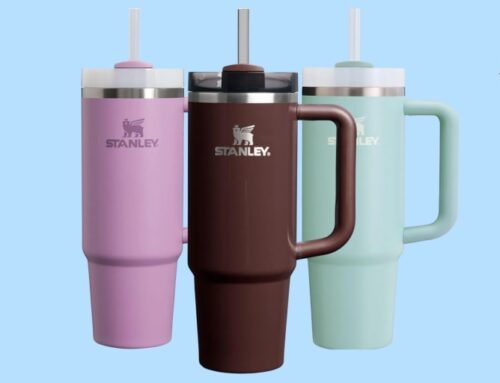Tariff-Sensitive Stocks Apple and Nike Are Getting Clobbered. Time to Buy?
April 13, 2025
Tariffs are rattling markets and leading to spikes in volatility. Growth-focused sectors like technology and consumer discretionary are particularly vulnerable given their cyclicality and global exposure.
Apple (AAPL 3.95%) and Nike (NKE 0.07%) are down over 20% year to date at the time of this writing, significantly underperforming the S&P 500 and Nasdaq Composite, which are also down significantly. Here’s why both stocks are selling off and whether they are worth buying now.

Image source: Getty Images.
A trade war with China is bad news for Apple
There’s no sugarcoating Apple’s exposure to tariffs, especially in China. China is a key market for Apple — both from a manufacturing and a sales perspective.
After Apple stock surged on April 9 in response to a 90-day pause on reciprocal tariffs to all countries except China, it sank 4% the following day on news that the tariff rate on Chinese goods would be raised to a staggering 145%. If it sticks, that steep of a tariff rate would crush Apple’s near-term profitability. That’s why the stock is down so much year to date.
Buying Apple stock now is a belief that two things will happen:
- Apple will be able to adjust its supply chain to avoid the brunt of tariffs, or tariffs will ease.
- Apple will be able to pass along higher costs to consumers.
On April 10, reports indicated that Apple was flying iPhones from India to the U.S. to circumnavigate tariffs on China. If Apple feels China could be a longer-term risk, it could work to permanently shift manufacturing out of China toward India and other partners in Southeast Asia. However, investors may want to wait for Apple’s upcoming earnings call on May 1 to better understand how the company plans to reduce the tariff impact.
As for Apple’s pricing power, iPhone growth has slowed in recent years. But the company has made up for some of that slowdown by growing its high-margin services segment and repurchasing stock to grow earnings per share. Entertainment services include Apple TV+, Apple Music, Apple Podcasts, Apple Books, and more. Apple also has a growing list of financial services, from Apple Pay to Apple Card and Apple Cash.
Apple has yet to make as big a splash in artificial intelligence as some investors may have hoped for, so there are fears that it lacks the pricing power it once had. However, services have enhanced the breadth of the Apple ecosystem.
All told, Apple stands out as a solid buy if you believe in its ability to navigate supply chain challenges and its pricing power. But it’s also reasonable to take a wait-and-see approach until investors get more clarity on Apple’s response to tariffs from the earnings call in a few weeks.
Nike was already struggling to gain its footing before the onset of tariff turmoil
Nike’s year-to-date losses are even more alarming, considering it was already one of the worst-performing components of the Dow Jones Industrial Average last year. Nike has sold off so much that it is now hovering around its lowest level in a decade.
The abridged version of Nike’s problems is that it overly invested in switching the business away from wholesale partnerships to digital, which worked during the pandemic but proved a costly error in recent years, as the direct-to-consumer segment has been underperforming wholesale and Nike’s brick-and-mortar stores. In addition to management blunders, Nike has been hit hard by formidable competition from Adidas and newer players like On Holding and Deckers Outdoor-owned Hoka.
Tariffs throw yet another wrench in the Nike investment thesis at a time when the company was already licking its wounds from past mistakes. Reports indicate that Nike makes 95% of its shoes in China, Vietnam, and Indonesia. China is a key market for Nike’s sales as well.
For the nine months ended Feb. 28, Greater China sales were $5.11 billion compared to $14.87 billion in North America and $9.26 billion in Europe, the Middle East, and Africa. During that period, Nike sold more footwear, apparel, and equipment in Greater China than the rest of Asia Pacific and Latin America combined — with Greater China making up a significant 15.1% of total Nike Brand revenue during that nine-month period.
Like Apple, buying Nike stock now is a bet on the power of its brand, that it can turn the business around, handle competition, and pivot its supply chain. However, Nike is arguably more vulnerable than Apple, considering the business was already in the middle of a turnaround before the onset of trade tensions.
Nike has gone from a growth stock to a dividend-paying value stock. Despite its struggles, the company has continued to buy back stock and has 23 consecutive years of dividend raises. The sell-off in the stock price has pushed Nike’s yield up to a 10-year high of 2.8% and its price-to-earnings ratio down to a 10-year low of just 18. Although if tariffs stick around, Nike’s earnings will almost certainly fall in the near term — making its valuation less appealing.
Two watch list-worthy stocks for patient investors
Apple and Nike may operate in entirely different industries, but the buy case for both companies is similar. Both face serious tariff risks, and neither company has been growing earnings at breakneck rates in recent years. However, these are two top brands whose valuations could look cheap in hindsight if they can endure this challenging period.
Apple stands out as the safer all-around play, whereas Nike has a higher risk and potential reward if it can turn the business around and navigate tariffs. Both stocks could be worth buying now if you have a long-term horizon. However, it’s also reasonable to keep both stocks on a watch list and wait for upcoming earnings calls for more clarity on their strategies, given we are sailing through uncharted waters.
Search
RECENT PRESS RELEASES
Related Post





